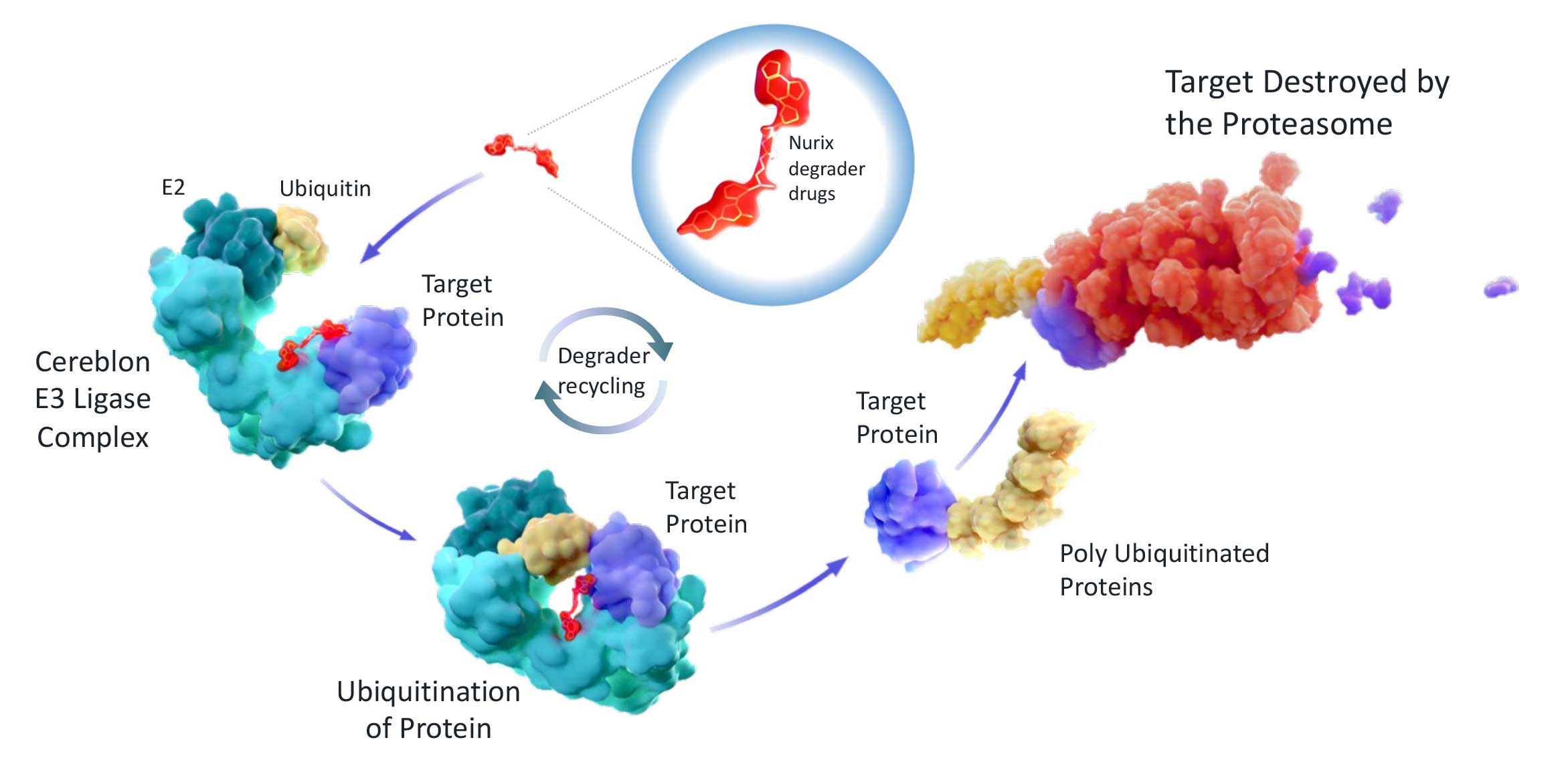Targeted Protein Degradation (TPD): A New Generation of Therapeutics
Drugging the Undruggable
E3 ligases catalyze the transfer of ubiquitin onto a target protein. The presence of the ubiquitin tag destines the protein for destruction by the proteasome. Targeted Protein Degraders are small molecules that simultaneously bind an E3 ligase and a target protein to facilitate the transfer of ubiquitin onto that target protein, thus causing its degradation. The Targeted Protein Degrader is then free to repeat this process, such that each degrader can cause the degradation of multiple target proteins. Given their ability to remove the targeted protein, degraders are functionally more similar to genetic and RNA knockout or knock-down, which typically require injection or infusion. Our degraders are typically designed to be administered orally.
Targeted Protein Degradation
Harnessing the ubiquitin proteosome system to eliminate disease proteins



 '
'